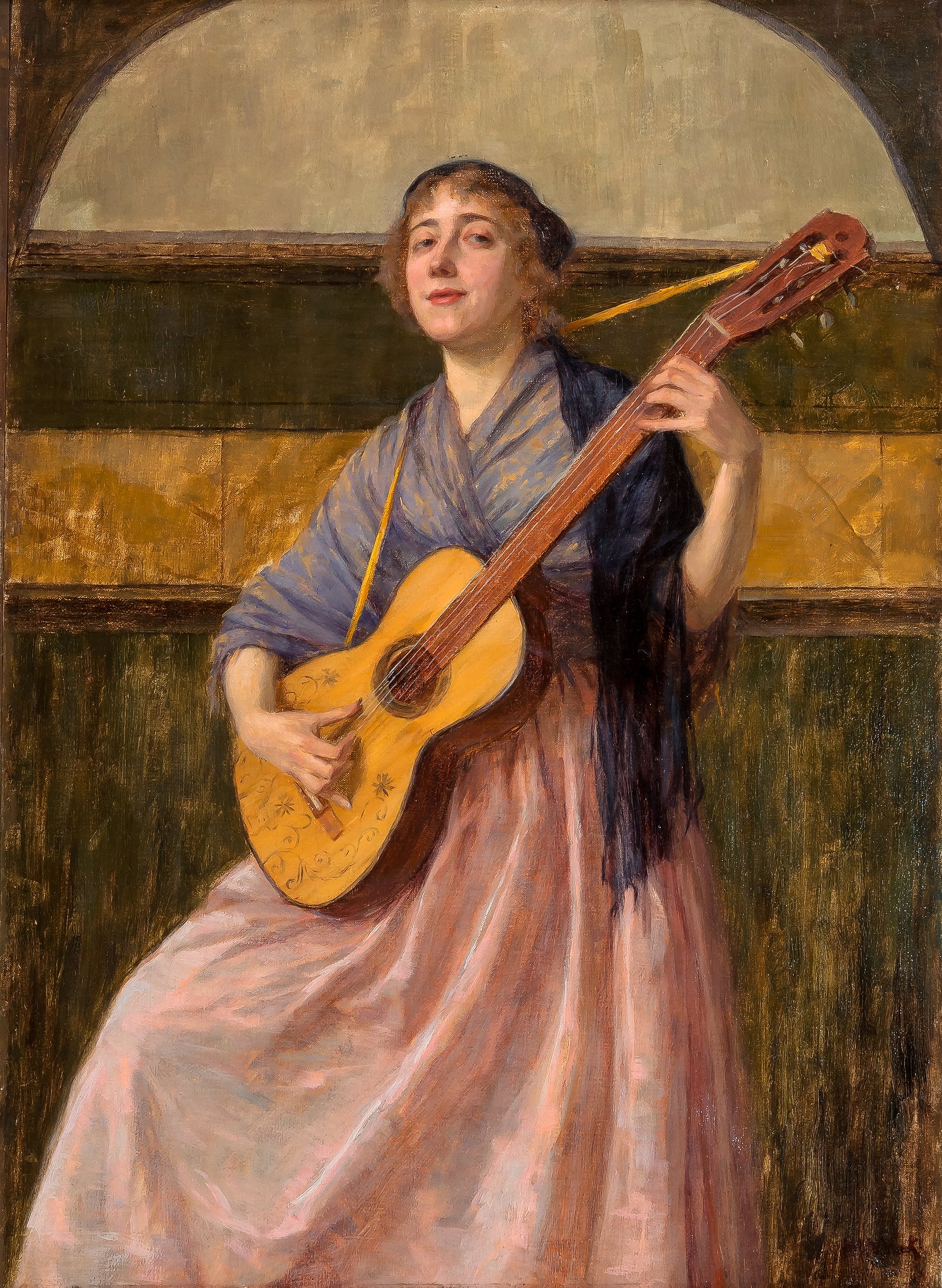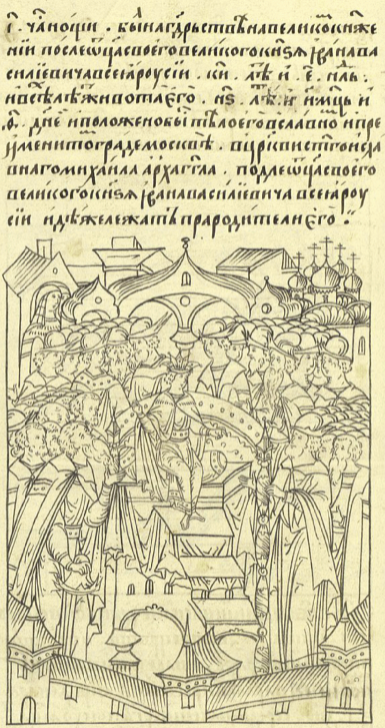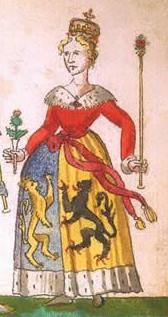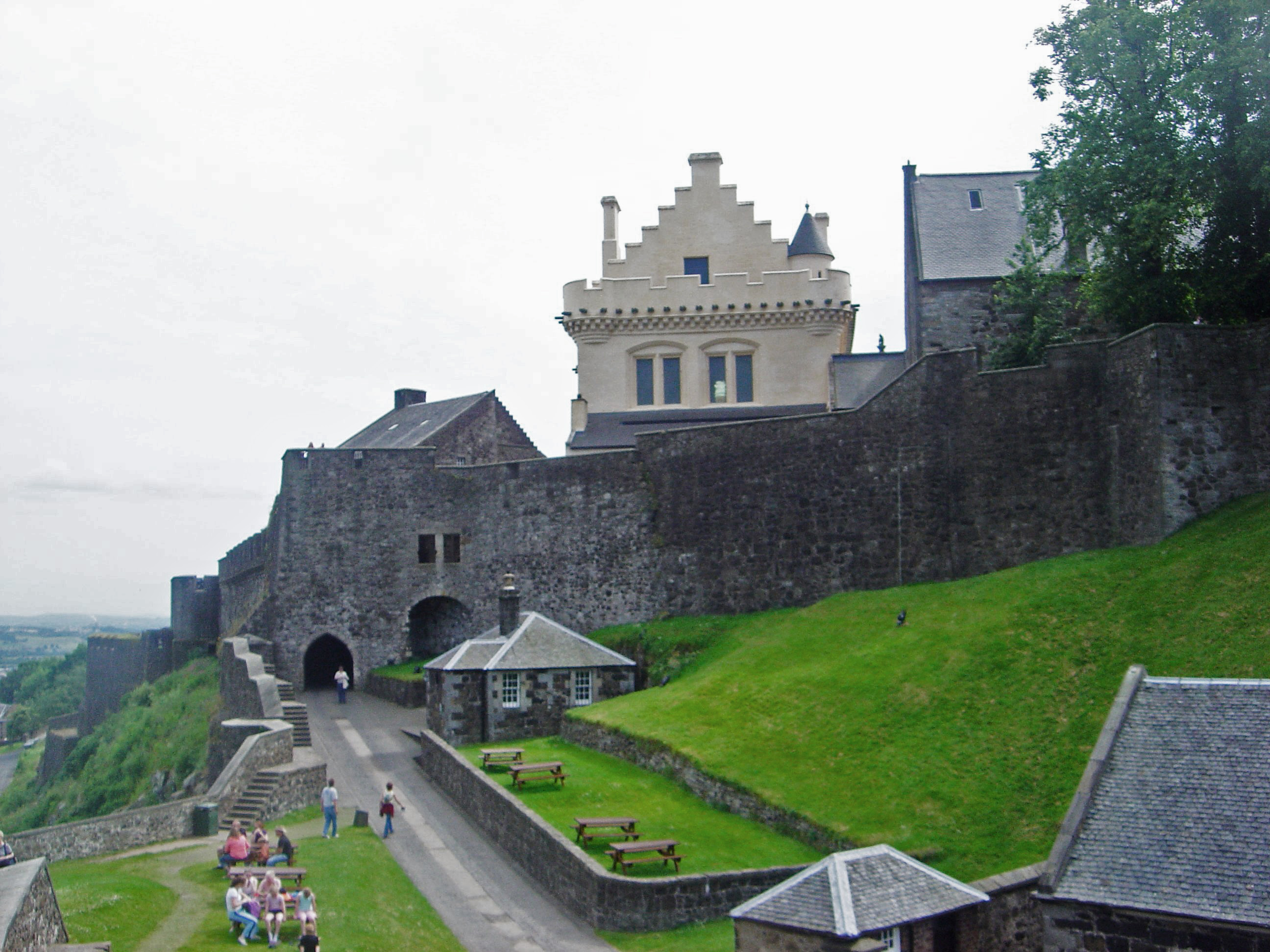|
Four Marys
"Mary Hamilton", or "The Fower Maries" ("The Four Marys"), is a common name for a well-known sixteenth-century ballad from Scotland based on an apparently fictional incident about a lady-in-waiting to a Queen of Scotland. It is Child Ballad 173 and Roud 79. In all versions of the song, Mary Hamilton is a personal attendant to the Queen of Scots, but precisely which queen is not specified. She becomes pregnant by the Queen's husband, the King of Scots, which results in the birth of a baby. Mary kills the infant – in some versions by casting it out to sea or drowning, and in others by exposure. The crime is seen and she is convicted. The ballad recounts Mary's thoughts about her life and her impending death in a first-person narrative. Versions of the ballad have been recorded by a number of artists, including Joan Baez, The Corries, and Angelo Branduardi. Sources of the ballad Most versions of the song are set in Edinburgh (Scotland's traditional capital), but Joan Baez ... [...More Info...] [...Related Items...] OR: [Wikipedia] [Google] [Baidu] |
Ballad
A ballad is a form of verse, often a narrative set to music. Ballads were particularly characteristic of the popular poetry and song of Great Britain and Ireland from the Late Middle Ages until the 19th century. They were widely used across Europe, and later in Australia, North Africa, North America and South America. While ballads have no prescribed structure and may vary in their number of lines and stanzas, many ballads employ quatrains with ABCB or ABAB rhyme schemes, the key being a rhymed second and fourth line. Contrary to a popular conception, it is rare if not unheard-of for a ballad to contain exactly 13 lines. Additionally, couplets rarely appear in ballads. Many ballads were written and sold as single-sheet Broadside (music), broadsides. The form was often used by poets and composers from the 18th century onwards to produce lyrical ballads. In the later 19th century, the term took on the meaning of a slow form of popular love song and is often used for any love song ... [...More Info...] [...Related Items...] OR: [Wikipedia] [Google] [Baidu] |
Mary Beaton
Mary Beaton (about 1543–1597), or Bethune as she wrote her family name, was a Scottish courtier. She is remembered in history as one of the four girls who were companions of Mary, Queen of Scots from childhood, known as The Queen's Maries or The Four Maries, and has also entered folklore through the traditional ballad of ''Marie Hamilton''. Origins Born about 1543, she was the daughter of Robert Bethune (died 1567), 4th Laird of Creich in Fife, and his French wife Jeanne Reynvell de Gresnoir or Gryssoner (died 1577). Her mother had come to Scotland as a maid of honour to the French princess Marie de Guise, who became the wife of King James V of Scotland from 1538 until his death in 1542, and had remained in Marie's entourage until 1560 while she acted as Regent of Scotland for her infant daughter Mary. Her father, originally a page of honour and later Master of the Household, came from a family with a long tradition of royal service in different ways. His father had been ... [...More Info...] [...Related Items...] OR: [Wikipedia] [Google] [Baidu] |
Catherine I Of Russia
Catherine I Alekseyevna Mikhailova (born Marta Samuilovna Skavronskaya; – ) was the second wife and Empress consort of Peter the Great, whom she succeeded as Empress of Russia, ruling from 1725 until her death in 1727. Life as a servant Only uncertain and contradictory information is available about her early life. Said to have been born on 15 April 1684 ( o.s. 5 April), she was originally named Marta Helena Skowrońska. Marta was the daughter of Samuel Skowroński (also spelled ''Samuil Skavronsky''), a Roman Catholic farmer from the eastern parts of the former Polish–Lithuanian Commonwealth, his parents were born in the area of Minsk (now Belarus). In 1680, he married Dorothea Hahn at Jakobstadt (now Jēkabpils, Latvia). Her mother is named in at least one source as Elizabeth Moritz, a daughter of a Baltic German woman, and there is debate as to whether Moritz's father was a Swedish officer. It is likely that two stories were conflated, and Swedish sources suggest that t ... [...More Info...] [...Related Items...] OR: [Wikipedia] [Google] [Baidu] |
Peter I Of Russia
Peter I (, ; – ), better known as Peter the Great, was the Tsar of all Russia from 1682 and the first Emperor of all Russia from 1721 until his death in 1725. He reigned jointly with his half-brother Ivan V until 1696. From this year, Peter was an absolute monarch, an autocrat who remained the ultimate authority and organized a well-ordered police state. Much of Peter's reign was consumed by lengthy wars against the Ottoman and Swedish empires. His Azov campaigns were followed by the foundation of the Russian Navy; after his victory in the Great Northern War, Russia annexed a significant portion of the eastern Baltic coastline and was officially renamed from a tsardom to an empire. Peter led a cultural revolution that replaced some of the traditionalist and medieval social and political systems with ones that were modern, scientific, Westernized, and based on radical Enlightenment. In December 1699, he introduced the Julian calendar, and in 1703, he introdu ... [...More Info...] [...Related Items...] OR: [Wikipedia] [Google] [Baidu] |
Ivan The Terrible
Ivan IV Vasilyevich (; – ), commonly known as Ivan the Terrible,; ; monastic name: Jonah. was Grand Prince of Moscow, Grand Prince of Moscow and all Russia from 1533 to 1547, and the first Tsar of all Russia, Tsar and Grand Prince of all Russia from 1547 until his death in 1584. Ivan's reign was characterised by Russia's transformation from a medieval state to a fledgling empire, but at an immense cost to its people and long-term economy. Ivan IV was the eldest son of Vasili III of Russia, Vasili III by his second wife Elena Glinskaya, and a grandson of Ivan III of Russia, Ivan III. He succeeded his father after his death, when he was three years old. A group of reformers united around the young Ivan, crowning him as tsar in 1547 at the age of 16. In the early years of his reign, Ivan ruled with the group of reformers known as the Chosen Council and established the ''Zemsky Sobor'', a new assembly convened by the tsar. He also revised the Sudebnik of 1550, legal code and in ... [...More Info...] [...Related Items...] OR: [Wikipedia] [Google] [Baidu] |
Clan Hamilton
The Clan Hamilton, or House of Hamilton, is a Scottish clan of the Scottish Lowlands.Way, George and Squire, Romily. ''Collins Scottish Clan & Family Encyclopedia''. (Foreword by The Rt Hon. The Earl of Elgin KT, Convenor, The Standing Council of Scottish Chiefs). Published in 1994. Pages 160–161. History Origins of the house The Hamilton chiefs descend from Walter fitz Gilbert of Hambledon, who appears in a charter to the Monastery of Paisley in about 1294. His lands appear to have originally been in Renfrewshire, however, his support for Robert the Bruce rewarded him with lands in Lanarkshire and the Lothians. These lands included Cadzow, which later became the town of Hamilton, South Lanarkshire. Wars of Scottish Independence Walter Fitz Gilbert was rewarded with lands for his support of king Robert the Bruce. Walter's son, David, fought at the Battle of Neville's Cross for David II of Scotland in 1346. David was captured and was not released until a substantial ... [...More Info...] [...Related Items...] OR: [Wikipedia] [Google] [Baidu] |
Mary Hamilton (lady In Waiting)
Mary Hamilton, or Maria Danilovna Gamontova (; died 14 March 1719), was the lady-in-waiting of Empress Catherine I of Russia and a royal mistress of Tsar Peter the Great of Russia. She was executed for abortion, infanticide, theft and slander of Empress Catherine. She is pointed out as one of the possible inspirations for the song "Mary Hamilton". Mary Hamilton was a member of the Scottish family Hamilton, whose ancestor Thomas Hamilton had emigrated to Russia during the reign of Tsar Ivan the Terrible, and was probably the daughter of William Hamilton and the cousin of Evdokiya Grigorievna Hamilton. She became lady-in-waiting to Empress Catherine in 1713, arousing attention with her beauty and love life, and became the lover of Peter the Great. She also had a lover, Ivan Mikhailovich Orlov. When Orlov betrayed her with Peter's other lover, Avdotya Chernysheva, she tried to win him back by giving him items stolen from Catherine. She had an abortion in 1715 by taking a medicine f ... [...More Info...] [...Related Items...] OR: [Wikipedia] [Google] [Baidu] |
James II Of Scotland
James II (16 October 1430 – 3 August 1460) was King of Scots from 1437 until his death in 1460. The eldest surviving son of James I of Scotland, he succeeded to the Scottish throne at the age of six, following the assassination of his father. The first Scottish monarch not to be crowned at Scone, James II's coronation took place at Holyrood Abbey in March 1437. After a reign characterised by struggles to maintain control of his kingdom, he was killed by an exploding cannon at Roxburgh Castle in 1460. Life James was born in Holyrood Abbey. He was the son of King James I and Joan Beaufort. By his first birthday, his only brother, his older twin, Alexander, had died, thus leaving James as heir apparent with the title Duke of Rothesay. On 21 February 1437, James I was assassinated, and the six-year-old James immediately succeeded him as James II. He was crowned in Holyrood Abbey by Abbot Patrick on 25 March 1437. On 3 July 1449, the eighteen-year-old James married t ... [...More Info...] [...Related Items...] OR: [Wikipedia] [Google] [Baidu] |
Mary Of Guelders
Mary of Guelders (; c. 1434/1435 – 1 December 1463) was Queen of Scots by marriage to King James II. She ruled as regent of Scotland from 1460 to 1463. Background She was the daughter of Arnold, Duke of Guelders, and Catherine of Cleves. She was a great-niece of Philip the Good, Duke of Burgundy. Burgundian court Philip and his wife Isabella of Portugal at first planned to have Mary betrothed to Charles, Count of Maine, but her father could not pay the dowry. Mary stayed on at the Burgundian court, where Isabella frequently paid for her expenses. Mary attended Isabella's daughter-in-law Catherine of France, while she herself was attended upon by ten people. The duke and duchess then started negotiations for a Scottish marriage. Philip promised to pay her dowry, while Isabella paid for her trousseau. William Crichton came to the Burgundian court to escort her back to Scotland. A tournament was held at Bruges to celebrate her departure; the victor was Jacques ... [...More Info...] [...Related Items...] OR: [Wikipedia] [Google] [Baidu] |
James V Of Scotland
James V (10 April 1512 – 14 December 1542) was List of Scottish monarchs, King of Scotland from 9 September 1513 until his death in 1542. He was crowned on 21 September 1513 at the age of seventeen months. James was the son of King James IV and Margaret Tudor, daughter of Henry VII of England. During his childhood Kingdom of Scotland, Scotland was governed by regents, firstly by his mother until she remarried, and then by his first cousin once removed, John Stewart, Duke of Albany. James's personal rule began in 1528 when he finally escaped the custody of his stepfather, Archibald Douglas, 6th Earl of Angus. His first action was to exile Angus and confiscate the lands of the Clan Douglas, Douglases. James greatly increased his income by tightening control over royal estates and from the profits of justice, customs and feudal rights. He founded the College of Justice in 1532 and also acted to end lawlessness and rebellion in the Anglo-Scottish border, Borders and the Hebrides. ... [...More Info...] [...Related Items...] OR: [Wikipedia] [Google] [Baidu] |
James IV Of Scotland
James IV (17 March 1473 – 9 September 1513) was List of Scottish monarchs, King of Scotland from 11 June 1488 until his death at the Battle of Flodden in 1513. He inherited the throne at the age of fifteen on the death of his father, James III of Scotland, James III, at the Battle of Sauchieburn, following a rebellion in which the younger James was the figurehead of the rebels. James IV is generally regarded as the most successful of the House of Stuart, Stewart monarchs of Scotland. He was responsible for a major expansion of the Royal Scots Navy, Scottish royal navy, which included the founding of two royal dockyards and the acquisition or construction of 38 ships, including the ''Great Michael'', the largest warship of its time. James was a patron of the arts and took an active interest in the law, literature and science. With his patronage the Chepman and Myllar Press, printing press came to Kingdom of Scotland, Scotland, the University of Aberdeen and the Royal College o ... [...More Info...] [...Related Items...] OR: [Wikipedia] [Google] [Baidu] |
Henry Stuart, Lord Darnley
Henry Stuart, Lord Darnley (1546 – 10 February 1567) was King of Scotland as the second husband of Mary, Queen of Scots, from 29 July 1565 until his murder in 1567. Lord Darnley had one child with Mary, the future James VI of Scotland and I of England. Through his parents, he had claims to both the Scottish and English thrones.Elaine Finnie Greig, 'Stewart, Henry, duke of Albany ord Darnley(1545/6–1567)', Oxford Dictionary of National Biography, Oxford University Press, 2004; online edn, Jan 200accessed 4 March 2012/ref> Less than a year after the birth of his son, Darnley was murdered at Kirk o' Field in 1567. Many contemporary narratives describing his life and death refer to him as simply ''Lord Darnley'', his title as heir apparent to the Earldom of Lennox. Origins He was the second but eldest surviving son of Matthew Stewart, 4th Earl of Lennox, by his wife Lady Margaret Douglas, which supported his claim to the English succession. Darnley's maternal grandparents ... [...More Info...] [...Related Items...] OR: [Wikipedia] [Google] [Baidu] |







